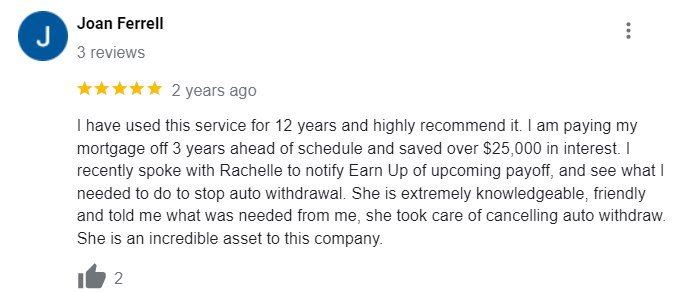Are you like the many borrowers typing into Google, “How to Check if My Student Loans are Federal?” Figuring out if your student loans are federal can feel like a maze. But, it’s key to unlocking doors that lead to lower interest rates and forgiveness programs. Let’s guide you on a journey through the NSLDS labyrinth to demystify the status of your student loans, blending simplicity with sophistication in our explanation. Additionally, we’ll explore the true significance of federal perks for your financial health and strategize on navigating private borrowing with ease.
By the end of this read, you’ll have a clear roadmap for identifying your loan type and making informed decisions about repayment strategies. Let’s demystify the process together.
Understanding Federal vs. Private Student Loans
The Importance of Knowing Your Loan Type
Picture this: you’re about to embark on a road trip, but instead of checking if your car runs on gas or diesel, you just fill ‘er up and hope for the best. Sounds risky, right? Well, that’s what it’s like not knowing whether your student loans are federal or private.
Sources of Student Loans
Federal student loans come straight from Uncle Sam via the U.S. Department of Education. They’re like the reliable family sedan: steady and backed by government safety nets. On the other hand, private student loans are more like sports cars provided by banks or other financial institutions – they might look appealing at first glance but can come with higher costs and less flexibility down the line.
If you’re scratching your head wondering which type you have, checking out the Federal Student Aid website is a good start.
Interest Rates and Repayment Flexibility
Here’s where things get interesting – literally. Federal loans often boast lower interest rates compared to their private counterparts. This difference can save you stacks of cash over time. Understanding how interest works with student loans can help make this clear.
Besides just costing less in interest, federal loan repayment plans offer flexibility based on income, a perk not typically found with private lenders. In the event life catches you off guard with unexpected challenges, your financial obligations could adapt, providing essential relief when it’s most needed.
How to Identify If Your Student Loans Are Federal
Using the NSLDS Website
The first step to untangling your student loan situation is hopping onto the National Student Loan Data System (NSLDS). Think of it as the Facebook for your federal student loans, where every loan you’ve taken out has a profile. But before you can start stalking your loans, you need an FSA ID. Your FSA ID is essentially your backstage pass, granting you entry to the detailed world of your student debt. Or, you can try EarnUp’s new PayItOff feature and just enter your name, phone number, and birthdate and find all your student loans.
Once logged in with your FSA ID, prepare yourself for a moment of truth. The NSLDS will lay bare everything from how much dough you owe to who’s holding onto it and waiting for repayment.
Interpreting Your NSLDS Information
Parsing through this data might feel like decoding ancient hieroglyphs at first glance. Each listed loan comes with its own set of details including balance and servicer name—key intel if you’re plotting which ones to tackle first or figuring out whom to call when questions pop up.
If finding “Federal” in front of any loan type feels like striking gold, congrats. You’ve got federal student loans on hand—which could mean access to more flexible repayment plans or even forgiveness programs down the line.
What to Do If Your Loans Are Not Listed on NSLDS
Finding out your student loans aren’t listed on the National Student Loan Data System (NSLDS) can feel like you’ve stumbled into a financial Twilight Zone. But don’t worry, it doesn’t mean they’ve vanished into thin air. It’s likely they’re just private loans, which don’t show up in the federal system.
The first step is not to panic. Start by checking any old paperwork or emails for loan information. Sometimes, the key to uncovering who owns your debt lies in the yearly summaries and various updates sent by creditors.
If paper trails lead nowhere, it’s time to get a little more Sherlock Holmes about it. Pulling up your credit report can be incredibly revealing since most private lenders will appear there with details about how much you owe and to whom. Websites like AnnualCreditReport.com let you view these reports for free once a year from each of the three major bureaus.
Last but definitely not least, reach out directly to your school’s financial aid office if all else fails; they may have records or at least some knowledge of where your loans originated.
Or, you can try EarnUp’s new PayItOff feature and just enter your name, phone number, and birthdate and find all your student loans.
Federal Student Loan Benefits
Imagine this: a world where student loans don’t feel like a financial black hole. That’s the universe federal student loans aim to create, with perks that private loans can hardly match.
First off, we’re talking about lower interest rates. The interest rates on government student loans tend to be more forgiving, potentially pocketing you a hefty sum throughout the loan’s duration. It’s not just about saving money today but securing a less stressful tomorrow.
But wait, there’s more. Access to forgiveness programs is another standout feature. For individuals committed to their community’s service, initiatives such as the Public Service Loan Forgiveness act as a beacon of hope, illuminating a path toward financial liberation. If you’re working in qualifying public service jobs and making consistent payments, part of your debt could vanish after ten years.
The cherry on top? Income-driven repayment plans adjust your monthly dues based on what you make, ensuring that paying back Uncle Sam doesn’t leave you eating ramen every night unless it’s by choice.
Maximizing Forgiveness and Repayment Assistance Programs
Finding your way through the maze of federal loan forgiveness and repayment assistance programs can feel like trying to solve a Rubik’s Cube in the dark. But once you know a few tricks, it suddenly becomes a lot less intimidating.
The Public Service Loan Forgiveness (PSLF) program is like that cool teacher who actually made learning fun. If you work in public service, this program forgives the remaining balance on your Direct Loans after you’ve made 120 qualifying payments. For more details on how to qualify, check out the official PSLF page.
Then there’s Income-Driven Repayment (IDR) plans—think of them as the flexible yoga instructors of student loans. These plans adjust your monthly payment amount based on your income and family size, stretching or shrinking to fit your financial situation better. After 20-25 years of payments under these plans, any remaining loan balance could be forgiven. Learn more about IDRs by visiting this resource.
FAQs in Relation to How to Check if My Student Loans Are Federal
How do you know if your student loans are federal?
Check the National Student Loan Data System (NSLDS) with your FSA ID. If they’re listed, they’re federal.
Are all student loans issued by the federal government?
Nope. Loans come from both Uncle Sam and private lenders like banks or credit unions.
Is direct unsubsidized loan a federal loan?
Absolutely. Direct Unsubsidized Loans fall under the U.S. Department of Education’s wing.
How do I know if my Navient student loan is federal or private?
Dive into your paperwork or reach out to Navient directly. They’ll set you straight.
Conclusion
So, we’ve navigated the maze. How to check if my student loans are federal shouldn’t be a puzzle anymore. You’ve got the NSLDS as your map and understanding the difference between federal and private loans as your compass.
Remember, identifying your loan type is just step one. Embarking on this path, using what you’ve learned for smarter repayment tactics truly marks the start of your adventure.
Federal or private, each loan has its path. For federal loans, it’s about unlocking lower interest rates and forgiveness programs. For private ones, it’s mastering higher rates with savvy management tactics.
In all of this, remember: Knowledge is power; use it wisely to steer through the world of student loans with confidence.









